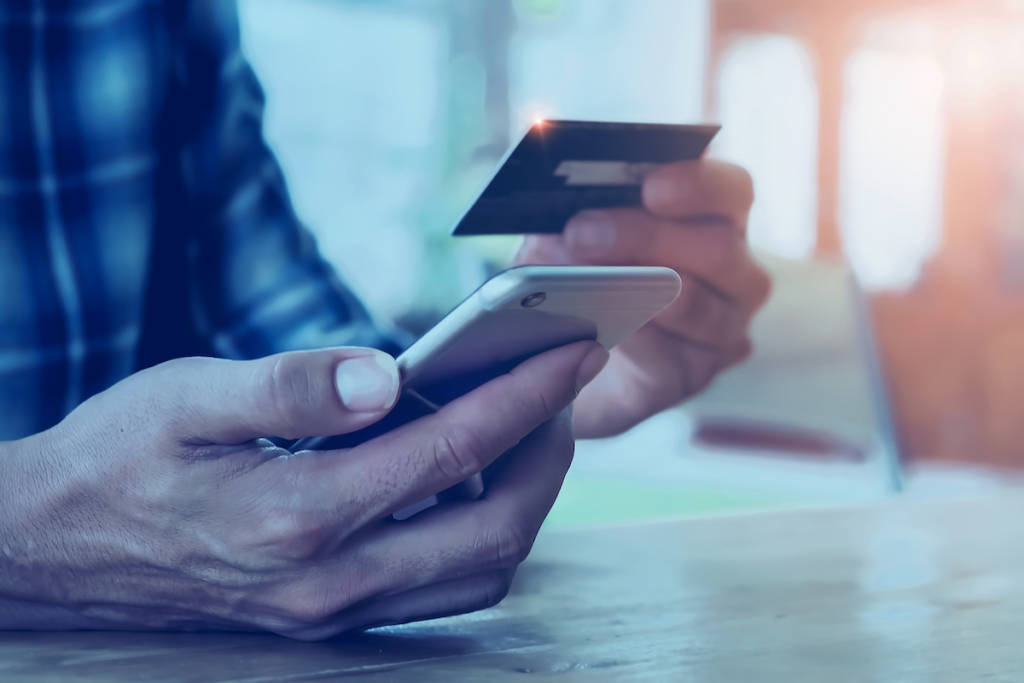To make happy customers, align your business with these nine trends.
-
Customers now use 18 different ways to pay loans
Customers want more choices. The McLaren coupe 570s comes in 20 different colors. Americans own 20 pairs of shoes. The number of TV channels in the average American home grew 50 percent to 189 channels.
“Have it your way” applies not only to colors of cars, shoes and TVs. But also to how customers pay the loans they used to get those cars, shoes and TVs.
Customers expect these choices when they pay you:
– Timing options: one-time and recurring payments
– Channel options: mobile, web, phone, mail, walk-in payments
– Funding sources: debit card, ACH, cash, check, money order paymentsGrouping these choices highlights that customers prefer electronic payments. In fact, customers pay 78 percent of loan payments electronically (average across all types of loans)
Customers are voting with their thumbs and mouse clicks. They increasingly want to pay you at your website from their mobile phone and computer. By 2019, customers are expected to pay 57 percent of loans at your website (average of all types of loans).
VPs of loan servicing are making moves to keep up with customers. 75 percent of lenders are currently adding new billing and payment options.
To get your business case approved, put the customer at the very center. But don’t take my word for it, read Capital One’s Business Case for Accepting Debit Card Payments.
-
Generations make a big difference in loan servicing
On average, Millennials spend 54 hours per year taking selfies. That’s significantly more than the other generations. Generational differences create longer lines at Niagara Falls due to all the selfies. Age differences will also determine which lenders survive.
Every other generation is decreasing in number, but Millennials are growing.
Millennials use debit cards, eBills and your website more than older generations. Millennials pay 36 percent of loans with a debit card. The future of loan payments is spelled D-E-B-I-T — C-A-R-D-S.
To better serve and understand Millennials, we must step into their shoes. So pull out your smartphone, snap a selfie and then go to your website. View your bill and try to pay with a debit card. What’s your experience like?
-
61 percent of loan statements are now delivered electronically
We’re entering into a new phase of customer communication. Personalization, interactivity and ‘anywhere access’ are king. Now we tell our phones “Ok Google, get me directions to the nearest golf course.” Then Google will tell us “you will arrive in 10 minutes but the course doesn’t open for another 30 minutes.”
Customers also expect personal and interactive messages from you. As customers use electronic statements more, they also expect more features. Now it’s time to add one-to-one marketing messages and videos.
As we just saw, you must serve a wide variety of customers. Raise loan servicing satisfaction with one-to-one messaging in loan statements. Imagine the possible messages you could send:
– “You’re 30 days delinquent, click here for a personalized payment plan”
– “You will pay off your car loan next month, click here to see next year’s models”
– “Homes in your area appreciated 10 percent last year, click for home equity loan rates”Three out of every four loan statements are expected to be electronic only by 2019 (average of all loan types). Lenders will turn higher digital engagement into higher profits by adding personalized marketing offers in electronic statements.
Tip: delivering personalized messages requires data stored in many different systems. Use an eBilling system that integrates the output from all your systems. This saves you from having to integrate your systems.
-
eBilling system fail: lots of customers receive both paper and electronic bills
22 percent of customers receive both an electronic and paper loan statement. This could make you pay for sending two bills each month. If your electronic bill does not give more value than paper, why would customers switch to paperless?
To satisfy customers while saving on postage, upgrade your eBilling system with
– Video and audio messages
– Text and email reminders the bill is due
– eBills designed for smartphones, tablets and laptopsMillennials are more likely than other generations to receive both paper and electronic bills. If we don’t move fast, Millennials could become set in their ways and inflate your costs for years.
-
35 percent more customers pay with a debit card than check
Change happens fast. A mobile app that takes disappearing pictures got a $20+ billion valuation. That’s a higher valuation than Keybank, Fifth Third Bank and Ally Financial. 150 million people use Snapchat each day to send disappearing pictures of their new car, home improvements or fun with friends from school.
Radical change also came to how customers pay for their car, home and schooling. Now 35 percent more customers pay their loans with debit cards rather than checks.
Customer behavior has really shifted.
This is easy to see in the story of a lender who five years ago received more payments via ACH than debit card. But Americans started desiring greater convenience. Debit cards have since grown at a 37 percent CAGR. Debit cards now account for over 80 percent of electronic payments at this lender.
Read how this lender won over customers with easy payment options.
-
Customers like recurring card payments
It’s March, so most people have abandoned their new year’s resolutions to go to the gym. But many keep paying their gym fees because they put their payment on “set it and forget it.” Imagine if customers use recurring payments for things they actually use like their car, home and credit card.
Customers like the ease of recurring card payments. In fact, 13 percent of wireless bills are paid automatically with a card. Lenders have been slower than wireless companies to accept automatic card payments due to cost concerns.
But customers reward lenders with 50 percent lower delinquency rates for recurring payments.
Lenders are beginning to recognize customers’ desire to set up recurring card payments. 4 percent of loans today are made with a recurring card.
-
80 percent of customers paying over the phone would switch to online payments
Our consumer survey found you can make customers happy while shifting them to lower cost behavior. Just make these four changes to your online bill pay service.
What will motivate customers to switch from phone to online loan payments?
– Getting an immediate online confirmation of payment
– Ability to pay with a debit card online
– Eliminating/reducing fee for paying with a debit card online
– eBill delivered via email with link to online payment -
Convenience costs less
Poor communication prevents many customers from using cheaper billing and payment methods. 21 percent of customers who pay over the phone would pay online if they knew they could. 22 percent of phone customers would pay online if you emailed them a reminder to pay at your website.
The COO at one lender made customers smile with easy recurring and one-time payments. They used a multi-channel marketing campaign to promote their new options, and the combination of new payment options and marketing worked. They shifted 10 percent of call center payments to self-service in one year.
Read their loan servicing success story.
-
One lender increased satisfaction by 50 percent with a new loan payment solution
Incorporating these insights into your loan servicing strategy can boost your profits. You’ll make happier customers, reduce complaints and save money.
A VP recently told us how they raised customer satisfaction 50 percent*. To make happy customers, they launched a new loan payment solution with:
– Debit card and ACH payment processing
– Mobile, web, interactive voice response and call center bill payment options
– Tight integration with their loan servicing software to reduce call center timeMaking it easier for customers to pay also increased dollars collected by 10 percent.
*Results from the 2016 TechValidate survey entitled “Bill Payment Solution”




